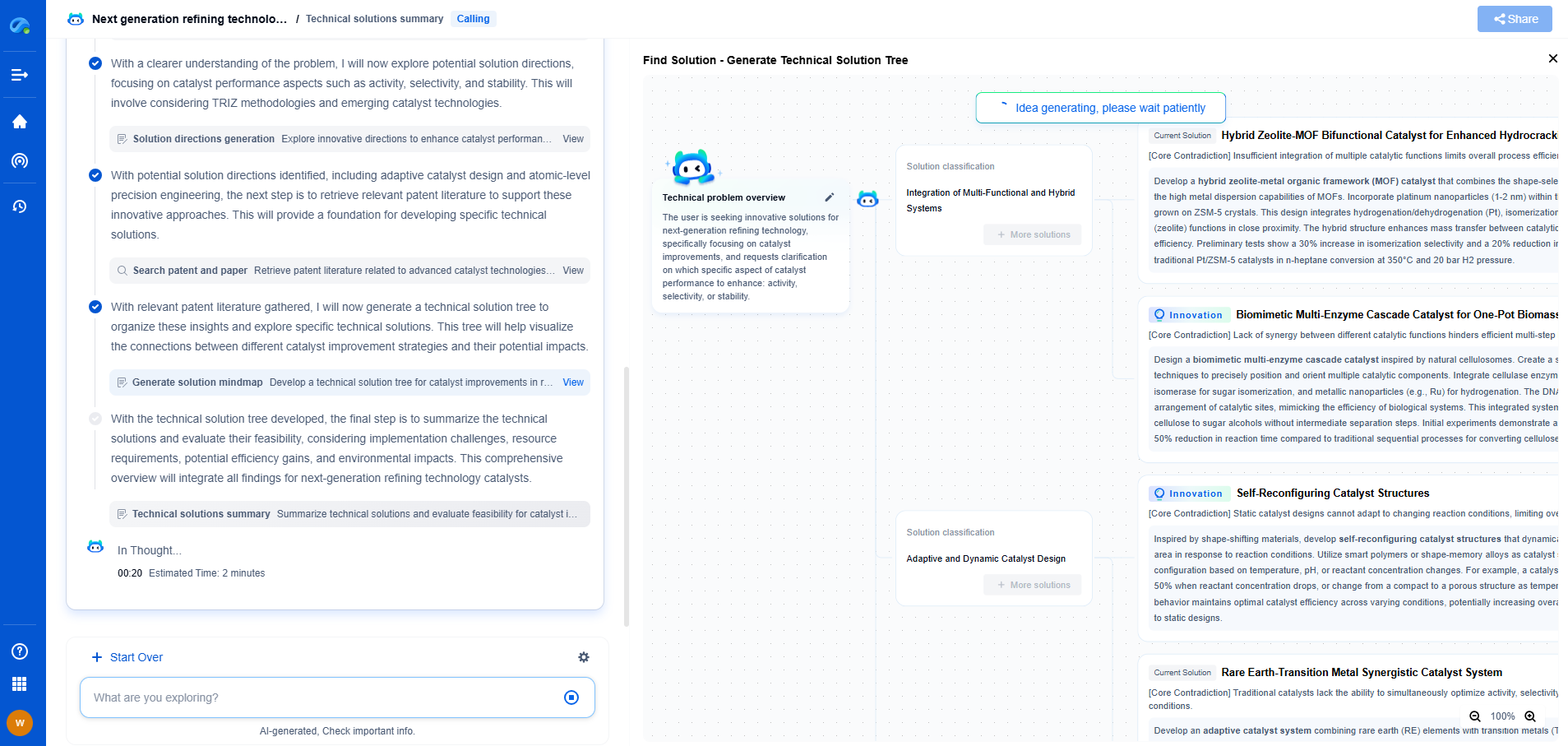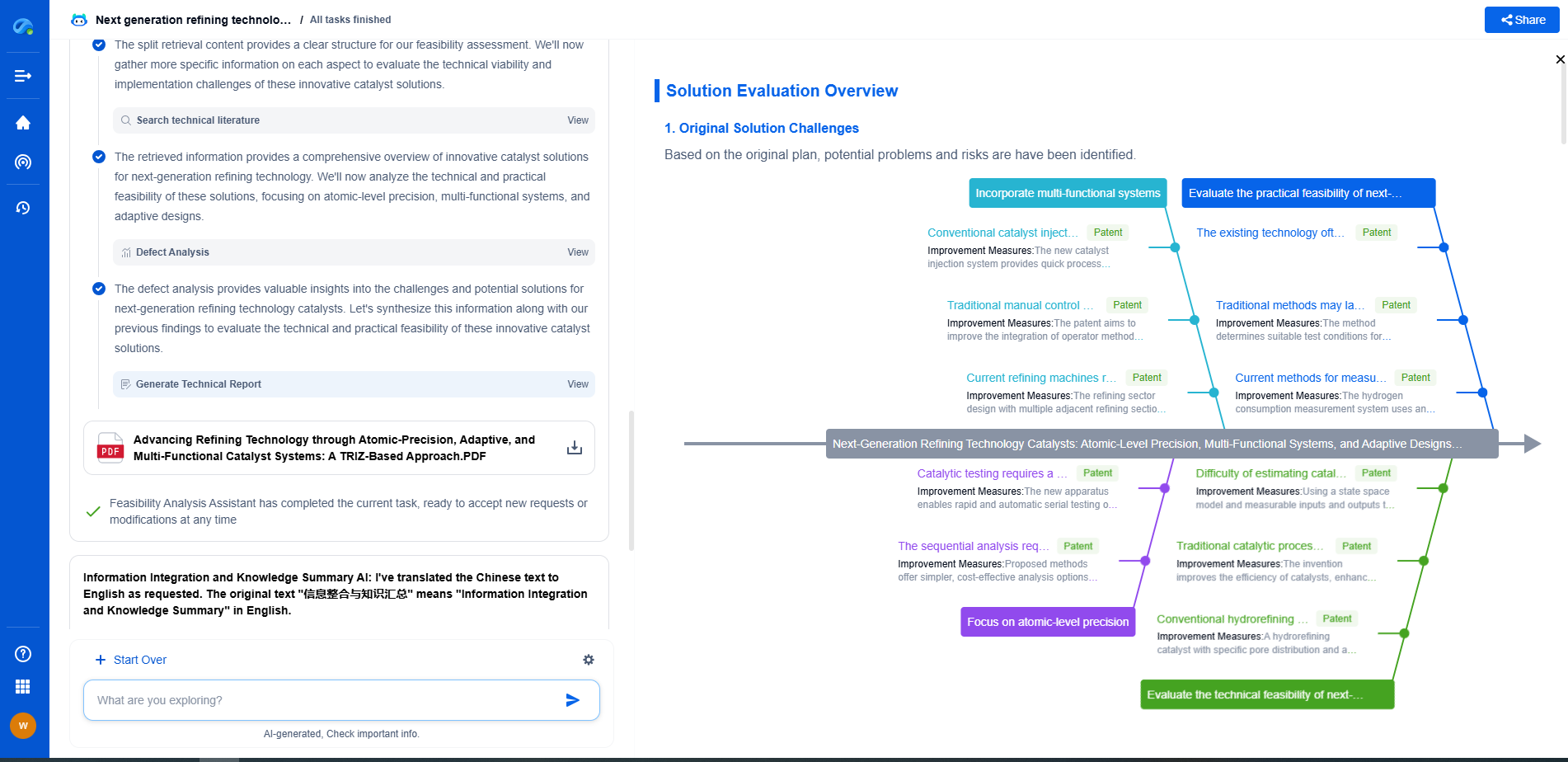How to Optimize Power-to-Weight Ratio in Electric Drivetrains
JUL 2, 2025 |
The power-to-weight ratio is a critical metric in the design and performance of electric drivetrains. It measures the amount of power the vehicle can produce relative to its weight. A higher ratio means better acceleration and efficiency, making it a crucial consideration for electric vehicle (EV) manufacturers seeking to enhance performance while maintaining energy efficiency.
Importance of the Power-to-Weight Ratio
The power-to-weight ratio is vital for several reasons. First, it directly impacts the vehicle's acceleration capability, which is a key performance indicator for consumers. Second, it influences the efficiency of energy consumption. The lighter the vehicle, the less energy is required to move it, extending the driving range and reducing energy costs. Finally, regulatory standards increasingly focus on energy efficiency and emissions, making an optimized power-to-weight ratio essential for compliance and market competitiveness.
Strategies for Optimizing Power
1. Enhanced Electric Motors: Selecting a high-efficiency motor is fundamental. Modern electric motors have evolved significantly, offering higher power outputs without a proportional increase in weight. Innovations such as axial flux motors provide significant power while maintaining a compact, lightweight design.
2. Battery Technology: Batteries are typically the heaviest component of an electric drivetrain. Advances in battery technology, such as solid-state batteries, offer higher energy densities, allowing manufacturers to reduce battery weight without sacrificing range or performance.
3. Advanced Power Electronics: Power electronics control the flow of electricity within the drivetrain. By using more efficient electronic components, manufacturers can reduce weight and energy losses, resulting in a more efficient power-to-weight ratio.
Strategies for Reducing Weight
1. Lightweight Materials: The use of lightweight materials, such as carbon fiber, aluminum, and advanced composites in the vehicle's construction, can significantly reduce overall weight. These materials offer strength and durability while minimizing weight, contributing to a better power-to-weight ratio.
2. Structural Optimization: Designing the vehicle with a focus on structural efficiency is crucial. This involves optimizing the vehicle's design to reduce unnecessary weight and improve aerodynamics, which can significantly enhance performance and efficiency.
3. Integration of Components: By integrating various components into multifunctional units, manufacturers can reduce the number of parts and, consequently, the vehicle's weight. For instance, combining the motor and transmission into a single unit can save weight and space.
Balancing Power and Weight
While reducing weight and enhancing power are essential, striking the right balance is crucial. Overemphasizing either aspect can lead to diminished returns. For instance, overly powerful motors may require heavier components to handle the increased forces, negating weight savings. Conversely, excessive weight reduction can compromise vehicle safety and comfort.
Industry Trends and Innovations
The automotive industry is witnessing a surge in innovations aimed at optimizing the power-to-weight ratio. From the development of ultra-efficient motors to the use of 3D printing for producing lightweight components, manufacturers are investing heavily in research and development. Additionally, startups and established companies alike are exploring alternative materials and manufacturing processes to achieve the ideal balance between power and weight.
Conclusion
Optimizing the power-to-weight ratio in electric drivetrains is a multifaceted challenge that involves balancing the vehicle's power output with its weight. By leveraging advanced technologies and innovative design strategies, manufacturers can enhance vehicle performance, improve energy efficiency, and meet the demands of a rapidly evolving market. As the industry continues to innovate, achieving an optimal power-to-weight ratio will remain a key focus, driving forward the future of electric vehicles.
Boost Innovation in Gears & Transmissions with Patsnap Eureka
Whether you're designing a next-gen planetary gearbox or optimizing gear tooth profiles for noise reduction, keeping up with the fast-evolving landscape of mechanical transmissions requires more than just experience—it takes insight, speed, and smart tools.
Patsnap Eureka, our intelligent AI assistant built for R&D professionals in high-tech sectors, empowers you with real-time expert-level analysis, technology roadmap exploration, and strategic mapping of core patents—all within a seamless, user-friendly interface.
Whether you're streamlining a manual transmission system or exploring electromechanical actuation, Patsnap Eureka helps your team move from concept to novelty faster than ever.
👉 Experience Eureka in action—request a personalized demo today and see how AI can revolutionize your gear innovation workflows.
- R&D
- Intellectual Property
- Life Sciences
- Materials
- Tech Scout
- Unparalleled Data Quality
- Higher Quality Content
- 60% Fewer Hallucinations
Browse by: Latest US Patents, China's latest patents, Technical Efficacy Thesaurus, Application Domain, Technology Topic, Popular Technical Reports.
© 2025 PatSnap. All rights reserved.Legal|Privacy policy|Modern Slavery Act Transparency Statement|Sitemap|About US| Contact US: help@patsnap.com

